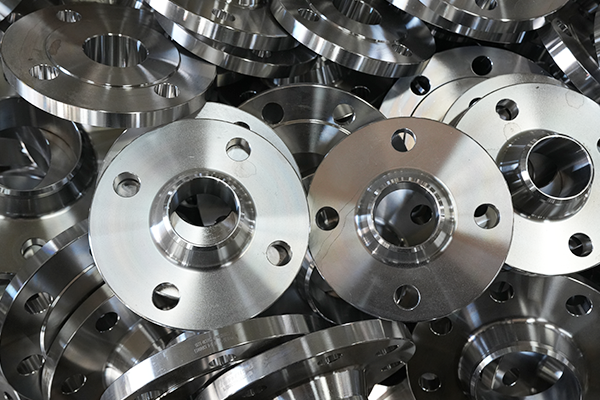NewsDetails
Flange Selection Guide by Pressure Class
author:Zhantong time:2025-05-23 00:39:17 Click:191
Selecting the right flange for a piping system depends on the pressure rating (Class) and the operating conditions. Here’s a breakdown of flange types, materials, and applications based on pressure levels:
1. Low-Pressure Systems (Class 150 & 300)
Typical Applications: Water, air, low-pressure steam, HVAC, light chemicals.
Recommended Flange Types
Slip-On (SO) – Easy to install, cost-effective, but weaker than WN.
Socket Weld (SW) – Better for small-diameter, high-vibration lines.
Threaded (TH) – Used where welding isn’t possible (e.g., hazardous areas).
Lap Joint (LJ) – Good for systems requiring frequent disassembly.
Common Materials
Carbon Steel (A105) – General-purpose use.
Stainless Steel (A182 F304/F316) – For corrosive fluids.
PVC/FRP – Non-metallic option for water/chemical handling.
Face Type
Raised Face (RF) – Most common.
Flat Face (FF) – Used with cast iron or brittle materials.
2. Medium-Pressure Systems (Class 600 & 900)
Typical Applications: Process piping, refineries, power plants, high-pressure steam.
Recommended Flange Types
Weld Neck (WN) – Best for high-stress applications (prevents leakage).
Socket Weld (SW) – For small-bore piping (≤2").
Threaded (TH) – Only for non-critical, low-vibration systems.
Common Materials
Carbon Steel (A105, A350 LF2) – For non-corrosive fluids.
Stainless Steel (A182 F316/F321) – High corrosion resistance.
Alloy Steel (A182 F11/F22) – High-temperature steam/oil service.
Face Type
Raised Face (RF) – Standard for ASME B16.5.
Ring-Type Joint (RTJ) – If high sealing integrity is needed.
3. High-Pressure Systems (Class 1500, 2500 & Above)
Typical Applications: Oil & gas wellheads, high-pressure steam, chemical reactors.
Recommended Flange Types
Weld Neck (WN) – Mandatory for high-pressure integrity.
Ring-Type Joint (RTJ) – Preferred for critical sealing (metal gaskets).
Blind (BL) – Used to terminate high-pressure lines.
Common Materials
Alloy Steel (A182 F91/F92) – Extreme temperature/pressure.
Duplex/Super Duplex (A182 F51/F53/F55) – Corrosion + high strength.
Forged Steel (A694 F60/F65/F70) – For sour service (H₂S environments).
Face Type
Ring-Type Joint (RTJ) – Standard for Class 1500+.
Raised Face (RF) – Only if gasket material can handle pressure.
4. Special Considerations
Temperature Effects
Low Temp (Below -29°C) → Use A350 LF2/LF3 (impact-resistant).
High Temp (Above 400°C) → Use A182 F11/F22/F91 (creep-resistant).
Corrosive Environments
Acids/Caustics → Stainless (316L), Hastelloy, PTFE-lined flanges.
Seawater → Super Duplex (F53/F55) or Titanium.
Vibration/Pulsation
Avoid Threaded Flanges (risk of loosening).
Use Weld Neck or Socket Weld for stability.
5. Standards & Compliance
ASME B16.5 – Covers Classes 150 to 2500.
ASME B16.47 – For larger diameters (Series A/B).
API 6A – Wellhead flanges (up to 20,000 psi).
 Recommended Products
Recommended Products
 Contact us
Contact us
—— Contact:Manager
—— Tel:+86 15231788966
—— Email:info@zhantongpipe.com
—— Url:https://www.zhantongpipe.com
—— Address:Mengcun Hui Autonomous County, Cangzhou City, Hebei Province









